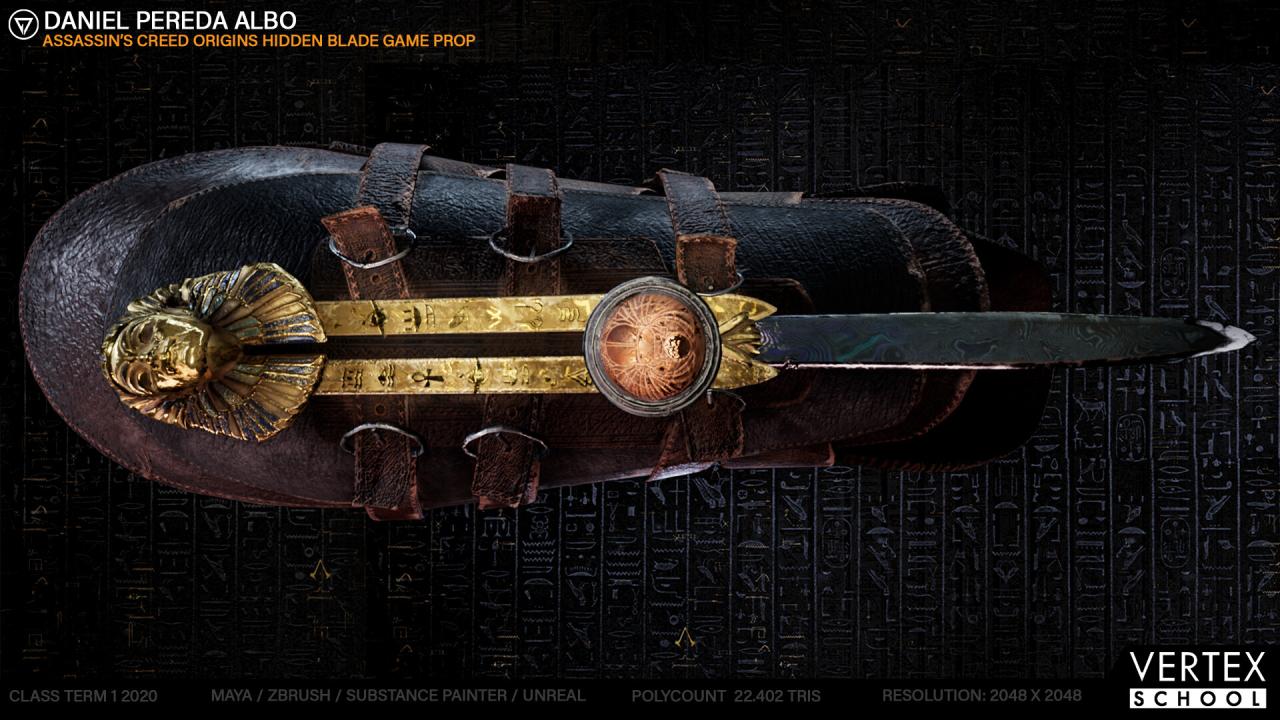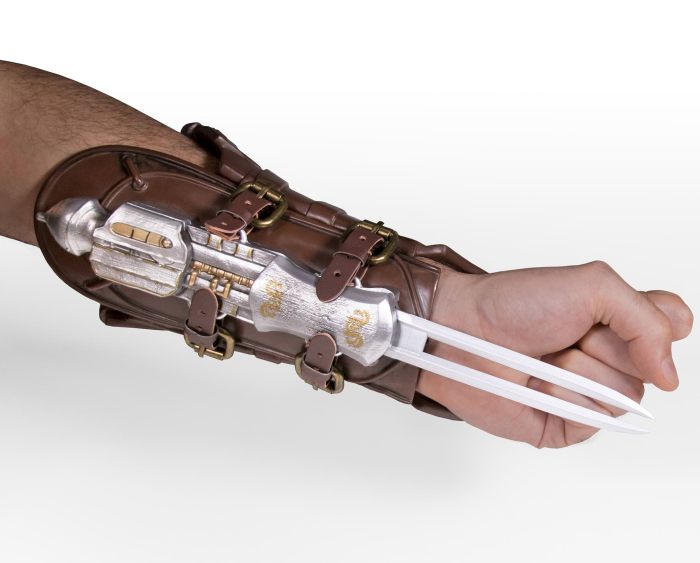The AC Origins Hidden Blade, an iconic weapon wielded by the Assassins in the Assassin’s Creed franchise, holds a rich history and significance that has shaped the very essence of the Creed. Its unique design, stealthy capabilities, and symbolic representation have left an enduring legacy in the gaming world and beyond.
Throughout the Assassin’s Creed games, the Hidden Blade has evolved, reflecting the technological advancements and cultural influences of each era. From its humble beginnings to its sophisticated upgrades, the Hidden Blade has remained a constant companion to the Assassins, aiding them in their covert missions and shaping their destiny.
Hidden Blade’s Origin and Significance
The Hidden Blade is an iconic weapon in the Assassin’s Creed universe, symbolizing the Assassins’ creed and their fight against tyranny. Its origins can be traced back to ancient Egypt, where the Medjay used a similar concealed blade called the “Khopesh.” This blade was used for stealthy assassinations and was later adopted by the Assassins during the Third Crusade.
In the Assassin’s Creed universe, the Hidden Blade is a symbol of the Assassins’ commitment to justice and their belief in the freedom of humanity. It is a tool that allows them to carry out their missions with precision and stealth, eliminating their targets without drawing attention to themselves.
Notable Assassinations Carried Out Using the Hidden Blade
- Altaïr Ibn-La’Ahad assassinated Robert de Sablé, Grand Master of the Knights Templar.
- Ezio Auditore da Firenze assassinated Rodrigo Borgia, Pope Alexander VI.
- Connor Kenway assassinated Haytham Kenway, his father and Grand Master of the Templar Order.
- Arno Dorian assassinated François-Thomas Germain, the Templar Grand Master who orchestrated the French Revolution.
- Bayek of Siwa assassinated Flavius Metellus, the Roman Prefect of Egypt.
Design and Mechanics of the Hidden Blade

The Hidden Blade is a unique and versatile weapon that is concealed within the forearm of the user. It is typically made of a lightweight metal, such as steel or titanium, and is designed to be both sharp and durable.
The blade is activated by a mechanism that is triggered by the user’s thumb, causing it to extend from the forearm with a flick of the wrist.
There are different types and variations of the Hidden Blade, each with its own unique features and capabilities. Some Hidden Blades have been designed to be dual-wielded, while others have been equipped with additional features, such as a poison blade or a hook.
Different Types and Variations of the Hidden Blade, Ac origins hidden blade
- The Altaïr Blade: The original Hidden Blade, used by Altaïr Ibn-La’Ahad during the Third Crusade.
- The Ezio Blade: A more refined version of the Hidden Blade, used by Ezio Auditore da Firenze during the Italian Renaissance.
- The Connor Blade: A heavy-duty Hidden Blade, used by Connor Kenway during the American Revolution.
- The Arno Blade: A dual-wielded Hidden Blade, used by Arno Dorian during the French Revolution.
- The Bayek Blade: A Hidden Blade with a curved blade, used by Bayek of Siwa during the Ptolemaic period of Egypt.
Role in Combat and Stealth
The Hidden Blade is a deadly weapon in combat, capable of delivering quick and precise strikes. It is particularly effective in stealth assassinations, allowing the user to eliminate their target without being detected. The Hidden Blade can also be used to disarm opponents, break locks, and climb walls.
Examples of Notable Assassinations Carried Out Using the Hidden Blade

- Altaïr Ibn-La’Ahad assassinated Robert de Sablé, Grand Master of the Knights Templar.
- Ezio Auditore da Firenze assassinated Rodrigo Borgia, Pope Alexander VI.
- Connor Kenway assassinated Haytham Kenway, his father and Grand Master of the Templar Order.
- Arno Dorian assassinated François-Thomas Germain, the Templar Grand Master who orchestrated the French Revolution.
- Bayek of Siwa assassinated Flavius Metellus, the Roman Prefect of Egypt.
Symbolism and Legacy: Ac Origins Hidden Blade
The Hidden Blade is more than just a weapon; it is a symbol of the Assassin’s Creed and their values. It represents their commitment to justice, their belief in the freedom of humanity, and their willingness to fight for what they believe in.
The Hidden Blade has become an iconic symbol in popular culture, recognized by gamers and non-gamers alike. It has been featured in numerous films, television shows, and other media, and has become a symbol of stealth, assassination, and the fight against tyranny.
Cultural Impact and Recognition Beyond the Games
- The Hidden Blade has been featured in numerous films, television shows, and other media, including the Assassin’s Creed film adaptations and the television series “Arrow.”
- The Hidden Blade has been referenced in popular culture, including in songs, books, and video games.
- The Hidden Blade has been used as a symbol of resistance and rebellion in real-world events, such as the Arab Spring uprisings.
Evolution and Upgrades

The Hidden Blade has evolved and been upgraded throughout the Assassin’s Creed games. Each new game has introduced new features and capabilities to the blade, making it more versatile and deadly.
Some of the most notable upgrades to the Hidden Blade include the addition of a poison blade, a hook, and a dual-wielding mechanism. These upgrades have allowed the Assassins to carry out their missions with greater efficiency and stealth.
Examples of Upgrades to the Hidden Blade
- The Poison Blade: A Hidden Blade with a poison-coated blade, capable of delivering a lethal dose of poison to the target.
- The Hook Blade: A Hidden Blade with a hook attached to the end, allowing the user to grapple onto surfaces and climb walls.
- The Dual-Wielding Mechanism: A Hidden Blade that can be dual-wielded, allowing the user to attack with both hands.
Expert Answers
What is the significance of the Hidden Blade in Assassin’s Creed?
The Hidden Blade is a symbol of the Assassin’s Creed, representing their commitment to stealth, precision, and justice.
How does the Hidden Blade facilitate stealthy assassinations?
The Hidden Blade’s retractable design allows Assassins to conceal it within their sleeves, enabling them to approach targets undetected and strike with deadly accuracy.
What are some notable assassinations carried out using the Hidden Blade?
Throughout the Assassin’s Creed games, the Hidden Blade has been used to assassinate key historical figures, such as Julius Caesar, King Richard the Lionheart, and Tsar Alexander II.
